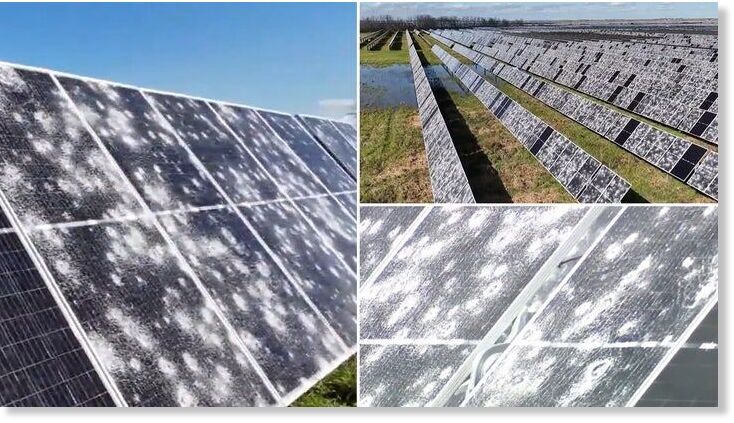
Aerial footage showed rows of cracked photovoltaic cells at the Fighting Jays Solar Farm near Needville in Fort Bend County, local news channel KTRK reported on Saturday. Baseball-sized hail stones were observed falling in the area overnight, as per the Houston Chronicle.
The solar project, which began producing power for Texas's energy grid in 2022, generates 350 megawatts across 3,300 acres of land and is expected to power 62,000 homes.
It is one of many renewable energy installations across the state which has championed clean energy projects in recent years while benefiting the most from federal tax credits and incentives under the Inflation Reduction Act.
Solar panels are built to be fairly durable to the elements and can continue to produce energy if damaged. Research by the National Renewable Energy Laboratory suggests hail-cracked panels have less than four percent energy loss. However, the Department of Energy notes that baseball-sized hail can have enough kinetic energy to fully break the glass on solar panels.
A spokesperson for Copenhagen Infrastructure Partners (CIP), one of two companies behind the solar farm, confirmed to Newsweek that the hailstorm had damaged some of the solar panels on the site.
"We are currently assessing the extent of the impact of the storm on the generation of the project, while the plant continues to safely operate at a reduced capacity," they added.
Newsweek also approached AP Solar Holdings, the other company involved in the project, via email for comment on Tuesday.
Residents expressed concerns that the damaged panels could leach chemicals into the surrounding environment.
One resident, Nick Kaminski, said that he was worried about chemicals potentially leaking into the groundwater, which his house uses as its water supply.
"I have a family—two children and a wife," he told Fox 13. "My neighbors have kids and a lot of other residents in the area who are on well water are concerned that the chemicals are now leaking into our water tables."
Mikes Fugua, another resident, told the channel that he was concerned that the chemicals could have carcinogenic effects.
While solar panels can contain toxic substances such as cadmium telluride and copper indium gallium diselenide, in solar cells they are found in solid form in a thin film that usually only becomes an environmental concern when disposing of them.
The CIP spokesperson said that "the silicon-based panels contain no cadmium telluride and we have identified no risk to the local community or the environment."
Experts have said that solar panels have several protective layers to avoid any substances being exposed through damage. County officials told local news outlets that hazardous materials crews had so far found no contamination in the area.



Reader Comments
to our Newsletter